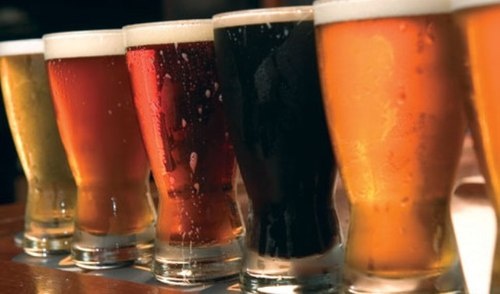Just read an interesting article about an ancient brew, I'd love to try and recreate it. Here's the article: http://io9.com/5734532/the-recipe-for-2500+year+old-celtic-beer


An archeobotanist has figured out how they made beer in 500 BC. With a ditch in the back yard, some barley seeds, and some henbane, you too can drink up like the ancient Celts.
Like me, many of you missed Oktoberfest this year, and every other year, for the last two and a half thousand years. We have a lot of drinking to make up for. Fortunately, archeobotanist Hans-Peter Stika, of the University of Hohenheim has been doing research that lets us know how to start. Stika has been spending time at ancient Celtic sites, figuring out how the local groups made their beer.
The first step to drinking like the Celts is to dig an oblong ditch. Pour in water and barley, and leave them there until the barley sprouts. Once they have, they need to be dried. Light a fire at each end of the ditch and keep it going until the barley is dried. This will darken the beer and give it a smokey flavor. It will also dry the grains slowly enough that they'll secrete something called lactic acid. Like other acids, it tastes sour. Sourness and smoke; delicious. Some of the grains will char. Leave those in the ditch for future archeobotanists to uncover. Mash up the grains to maximize the amount of sugar that the yeast, which gets added later, has to feed on.
Most beers are now flavored with hops, the flowers from the hop plant, but the first use of them wasn't documented until 800 AD, well after the time period we're looking at. Before that, beer was flavored with a special mix of plants known as gruit. Gruit contains yarrow, carrot seeds, mugwort, and henbane - otherwise known as stinking nightshade. The last is said to increase the intoxicating properties of alcohol, which is the only reason was something with that combination of names would be added to food. Just to be safe - don't add that. Just imagine what it will taste like. Boil these ingredients with the mashed grains, either towards the beginning to flavor the beer. Separate out the lumpiest bits of grain. You don't need them anymore.
Next comes the heating and the yeasts. The yeasts have to be alive to make alcohol, so the beer would have to have been heated slowly. It's possible this was done by heating stones and dropping them into the mixture, but more likely that didn't come until later. Instead, just keep the beer over a very low fire and add yeast. There's no need to get brewer's yeast from a store. The cloudy stuff that accumulates on fruits like grapes, and on nuts, is wild yeast. Dropping some fruits or nuts into the slowly heating mixture, and letting it continue to stay lukewarm for a long time should brew up all the yeast that's needed. Keeping it somewhere between 50 and 70 degrees fahrenheit. When the yeast is done, most of it will settle to the bottom. Cool the beer and enjoy.
Or, at least try to enjoy. Ancient beer was served room temperature to warm, and usually had a good bit of the yeast still in it. All that and mugwort, too!


